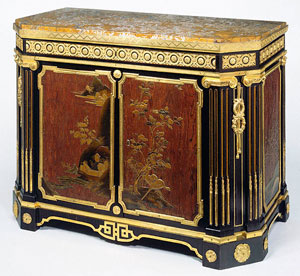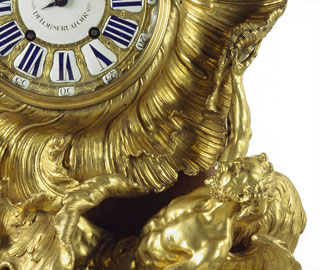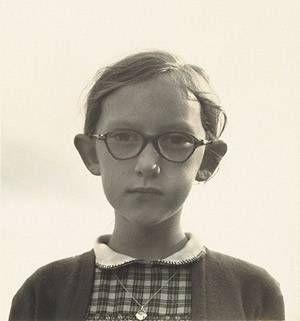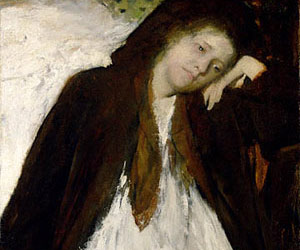 |
 |
 |

 |
|
This series of lectures focuses on artworks currently on display at the J. Paul Getty Museum at the Getty Center, providing new insights into exhibitions, the collection, and issues they raise from the unique perspectives of the curators themselves.
All presentations are free, with opportunities to view the artworks discussed both before and after the talks.
Next in the series:
Previously in the series:
|
 |

|

 |
 |
 |
|
Date: Sunday, November 8, 2009
Time: 3:00 p.m.
Location: Getty Center, Harold M. Williams Auditorium
Admission: Free; reservations required. Call (310) 440-7300 or use the "Make Reservation" button below.

Over the past decade, the Department of Paintings at the J. Paul Getty Museum has added almost 60 paintings and pastels to the Museum's collection.
Scott Schaefer, senior curator of paintings, discusses many of these works, focusing on their art historical significance, why they were chosen, and how they enrich the collection as a whole. The paintings span centuries, styles, and subjects—from Titian's commanding Renaissance portrait of Alfonso d'Avalos to Gustave Courbet's dynamically modern landscape Grotto of Sarrazine.
Some of the most exciting recent additions to the collection are masterpieces of European painting brought into public view for the first time in decades, such as Peter Paul Rubens's Calydonian Boar Hunt (pictured at right) and Paul Gauguin's Arii Matamoe (The Royal End).
Schaefer explains how these paintings contribute to the Museum's collection, which forms the basis of all its activities—from presentation, education, and public programming to scholarship and exhibitions.
|
 |


|

 |
 |
 |
 |
|
Wednesday, October 7, 2009, 3:00 p.m.
The J. Paul Getty Museum's collection includes nine pieces of French furniture dating to the mid-18th-century that incorporate panels of Asian lacquer as part of their surface decoration. Recently, Museum conservators have collaborated with scientists from the Getty Conservation Institute to pursue a research program focused on these extraordinary objects. The results have been surprising, intriguing, and, at times, even startling.
Arlen Heginbotham, associate conservator of decorative arts at the J. Paul Getty Museum, and Michael Schilling, senior scientist at the Getty
Conservation Institute, described lacquered furniture and then presented, in layman's terms, the wide variety of scientific techniques (such as x-ray imaging, ultraviolet microscopy, electron microscopy, infrared microscopy, and mass spectrometry) they have used to unravel the history of objects in our collection. They also described the important role that historical and archival research plays in providing context for the analytical results. In this case, 18th-century French treatises and 17th-century archives of the Dutch East India Company have provided critical pieces of information that reveal the full, and unexpected, implications of their scientific findings.
|
 |


|

 |
 |
 |
 |
|
Wednesday, June 3, 2009, 3:00 p.m.
The suite of early Rococo furniture made in 1745–46 for the picture gallery at Temple Newsam, a historic country house near Leeds, England, is astonishing both in its extent and its sculptural quality. Anthony Wells-Cole, former senior curator at Temple Newsam, explored the context for which this remarkable furniture was made, investigated the genesis of its design, and described how he restored the great room to which it has been returned. The talk complemented the exhibition Taking Shape: Finding Sculpture in the Decorative Arts, on view March 31–July 5, 2009, at the Getty Center.
|
 |


|

 |
 |
 |
 |
|
Wednesday, May 13, 2009, 3:00 p.m.
Following the invention of photography in 1839, portraiture became accessible to a larger public. Continuing technical improvements enabled the instantaneous capture of likeness and expanded the dialogue between the photographer and the sitter. Anne Lacoste, assistant curator of Photographs at the J. Paul Getty Museum, surveyed the evolution of the genre from studio portrait to site portrait as document. The talk complemented the exhibition In Focus: The Portrait, on view January 27–June 14, 2009, at the Getty Center.
|
 |


|

 |
 |
 |
 |
|
Wednesday, March 25, 2009, 3:00 p.m.
The Ottonian Empire (ruled by a succession of emperors named Otto) held sway for little more than a century, yet left behind a lasting artistic legacy. This culture, whose emperors were seen as God's representatives on earth, produced sumptuous examples of manuscript illumination. Kristen Collins, associate curator of Manuscripts at the J. Paul Getty Museum, explored these richly illuminated objects against the backdrop of art and ritual in the Ottonian church and state. The talk complemented the exhibition German and Central European Manuscript Illumination, on view February 24–May 24, 2009, at the Getty Center.
|
 |


|

 |
 |
 |
 |
|
Wednesday, February 18, 2009, 2:00 p.m.
The study of unfinished paintings informs the artist, art historian, and conservator in many different, fascinating ways. David Bomford, associate director of the Getty Museum, showed striking examples of paintings that were never completed in order to discuss how unfinished paintings can reveal an artist's intention, why a painting might have been left unfinished, and what constitutes "finish" in painting.
|
 |


|

 |
 |
 |
 |
How to Get Here
The Getty Center is located at 1200 Getty Center Drive in Los Angeles, California, approximately 12 miles northwest of downtown Los Angeles. See Hours, Directions, Parking for maps and driving directions.

|
 |
 |
Event Information by E-Mail
Be the first to know about upcoming lectures, concerts, and exhibitions by signing up for our free e-newsletters. Learn more and sign up now. |
|
 |
 |






